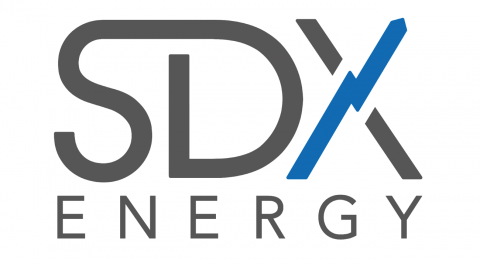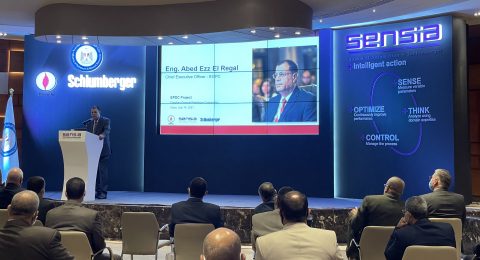BP is making good progress in its drive to improve performance, chief executive Tony Hayward said today as the company announced underlying profits for the third quarter of 2008 of $8.9 billion, excluding non-operating items and fair value accounting effects.
Despite some operational upsets, including hurricane damage in the Gulf of Mexico and interruptions to output from its Caspian fields, BP’s oil and gas production was slightly up on the same period of last year and the underlying result for the refining and marketing business rose by 70%.
“Although it has since fallen away sharply, the high oil price of the third quarter obviously helped our absolute result,” Hayward said. “But this should not obscure very real operational improvements in refining and rigorous cost control across the company that kept our cash costs essentially flat compared with last year – despite immense inflationary pressures in the sector.
“We are making good on our promise to deliver the strategy we laid out earlier this year – upstream growth, downstream turnaround and corporate simplification. We are well-placed to weather the prevailing financial storm and to benefit from the business opportunities that may well arise from a downturn.”
The highlights of today’s results were:
-
Replacement cost profit of $10 billion, up 148% on 3Q 2007, including a gain of $1.1 billion from non-operating items and fair value accounting effects.
-
Operating cash flow of $14.9 billion, a rise of 133%.
-
Upstream underlying pre-tax profit of $11.5 billion, including $849 million from TNK-BP – up from $6.3 billion.
-
Slightly higher output of 3.664 million barrels of oil equivalent, but showing an underlying rise of around five per cent after adjusting for oil price impacts on production-sharing agreements.
-
Downstream underlying pre-tax profit of $1.3 billion, up some 70%.
-
Gearing of 17 per cent, compared with target range of between 20 and 30%.
-
Confirming a dividend of 14 cents a share payable in December, Hayward said this represented a dollar rise of some 30% and a Sterling rise of over 60% versus a year ago.
“BP is very aware that in the current volatile climate dividends and the strength of balance sheets are a matter of concern to investors, including pension funds. In the UK, for instance, we estimate that our dividend is currently the equivalent of more than 10 per cent of the dividend income paid to pension funds by FTSE 100 companies.
“Our aim remains unchanged – to grow that dividend through time in line with our view of future sustainable performance. As new upstream projects like Thunder Horse come on stream, refinery availability is restored in the US, and the results of cost initiatives begin to deliver, the financial benefits of that performance are showing through. We are steadily and methodically meeting our promises.”
Hayward said that although oil prices could dip further as the world enters recession, “I believe that BP is well-positioned to cope with such volatility. Our balance sheet is strong and we have committed less of our portfolio to high-cost options like tar sands and gas conversion than some of our peers.
“As I said, we think the current turmoil may in fact create opportunities for us and we will look at those very closely.”
Describing the pace of BP’s recovery as one of “steady acceleration”, Hayward said production growth would be underpinned well into the next decade by the series of major projects already under way together with BP’s strong resource base and continuing exploration success. “In refining and marketing, we are closing the competitive gap against our peers.”
Hayward said there would be no let-up in the drive for corporate simplification, continued cost reduction and front-line efficiency in operations. “BP’s workforce across the world has responded powerfully to our determination to make every dollar count. Today’s results reflect those efforts. Our disciplined approach will continue and there is much more we plan to do.”
BP’s third-quarter replacement cost profit was $10,029 million, compared with $4,043 million a year ago, an increase of 148%. For the nine months, replacement cost profit was $23,006 million compared with $14,975 million a year ago, up 54%.
-
Non-operating items and fair value accounting effects for the third quarter had a net $1,147 million favorable impact compared to a net $448 million unfavourable impact for the third quarter of 2007. For the nine months, the respective amounts were $632 million unfavourable and $561 million favourable – see further details on page 3. The largest non-operating item for the third quarter was a fair value gain on embedded derivatives which amounted to $1,098 million on a pre-tax basis. For the nine months, the fair value loss on embedded derivatives amounted to $1,673 million on a pre-tax basis.
-
Net cash provided by operating activities for the quarter and nine months was $14.9 billion and $32.5 billion compared with $6.4 billion and $20.4 billion respectively a year ago.
-
The effective tax rate on replacement cost profit for the third quarter was 33% and for the nine months was 35%; a year ago, the rates were 33% and 32% respectively.
-
Net debt at the end of the quarter was $22.0 billion compared to $22.2 billion a year ago. The ratio of net debt to net debt plus equity was 17%, compared with 20% a year ago.
-
Total capital expenditure and acquisitions was $8.9 billion for the quarter and $23.7 billion for the nine months. Capital expenditure, excluding acquisitions and asset exchanges and excluding the accounting for our transactions with Husky (see page 26) and Chesapeake (see page 17), was $5.2 billion for the quarter, $14.9 billion for the nine months and is expected to be around $21-22 billion for the year. Disposal proceeds were $365 million for the quarter and $700 million for the nine months.
-
The quarterly dividend, to be paid in December, is 14 cents per share ($0.84 per ADS) compared with 10.825 cents per share a year ago. For the nine months, the dividend showed an increase of 30%. In sterling terms, the quarterly dividend is 8.705 pence per share, compared with 5.308 pence per share a year ago; for the nine months, the increase was 43%. During the quarter, the company repurchased 92.9 million of its own shares for cancellation at a cost of $911 million. For the nine months, share repurchases were 269.8 million at a cost of $2.9 billion.
$12,709 million and $33,552 million respectively, increases of 102% and 70% over the same periods of 2007.
The increases in both periods were primarily due to higher oil and gas realizations. Additionally, the results reflected a higher contribution from the gas marketing and trading business, but were impacted by higher production taxes and higher depreciation. Costs were higher, driven by sector-specific inflation, but this was
substantially mitigated by reductions resulting from our focus on cost control. The results also included higher earnings from equity-accounted entities, primarily from TNK-BP. The third-quarter result benefited from gains from non-operating items.
The net non-operating gain of $1,118 million in the third quarter primarily comprises fair value gains on embedded derivatives. In the first nine months, the net non-operating charge was $1,234 million with the most significant item being fair value losses on embedded derivatives partly offset by the reversal of certain provisions and of a previous impairment charge. The corresponding periods in 2007 contained net non-operating gains of $10 million and $1,145 million respectively. Additionally, in the third quarter, fair value accounting effects had a favorable impact of $97 million compared with an unfavourable impact of $36 million a year ago. For the first nine months, the unfavourable effect was $535 million compared with an unfavourable effect of $79 million a year ago.
Reported production for the quarter was 3,664mboe/d, slightly higher than the third quarter of 2007. After adjusting for the impact of lower entitlement in our production-sharing agreements (PSAs), production was around 5% higher than the third quarter of 2007. The continued ramp-up of production following the start-up of major projects in late 2007 and the first half of 2008 more than offset the impacts of hurricanes in the Gulf of Mexico and other operational events in the third quarter.
Reported production for the first nine months was 3,802mboe/d, slightly higher than the same period of the previous year. After adjusting for the effect of entitlement changes in our PSAs, production for the first nine months was around 6% higher than the same period of 2007.
In the Gulf of Mexico, we progressed the commissioning of Thunder Horse (BP 75% and operator) with the startup of the second well. In Australia, the North West Shelf Venture’s fifth LNG processing train became fully operational and, shortly after the end of the quarter, its third major offshore gas production facility (Angel) began producing. BP is one of six equal participants in the North West Shelf Project.
Also during the quarter, Sonatrach announced exploration success in Algeria with the Tin Zaouatene-1 (TZN-1) discovery in the Bourarhet Sud Blocks 230 & 231 (BP 49% and operator). Shortly after the end of the quarter, we announced a discovery in the Freedom prospect in the deepwater Gulf of Mexico (BP 25% and operator) and, jointly with Sonangol, we announced Dione, our sixteenth discovery in ultra-deepwater Block 31, offshore Angola (BP 26.67% and operator).
In August, we completed the acquisition of Chesapeake Energy Corporation’s interests in approximately 90,000 net acres of leasehold and producing natural gas properties in the Arkoma Basin Woodford Shale play for $1.75 billion. In addition, in September, we acquired a 25% interest in Chesapeake’s Fayetteville Shale assets in Arkansas for $1.9 billion. As a result of this transaction, BP acquired approximately 135,000 net acres of leasehold.
In the fourth quarter, we expect increased production reflecting normal seasonal patterns, continuing project ramp-ups and recovery from the hurricanes in the Gulf of Mexico and other operational events in the third quarter.
(Rigzone)







